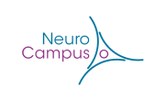Andreas Draguhn, Institute of Physiology and Pathophysiology, Heidelberg University | Oscillating hippocampal networks – patterns, mechanisms and potential ‘meaning’ of cooperative neuronal activity
| When |
Jan 16, 2018
from 05:15 PM to 06:45 PM |
|---|---|
| Where | BCF Lecture Hall, Hansastr. 9a |
| Contact Name | Prof. Dr. Ulrich Egert |
| Add event to calendar |
|
Abstract
In almost all brain areas, neurons co-ordinate their activity in time, sometimes firing action potentials in strict synchrony, sometimes firing in sequences or in other temporal patterns. Of similar importance is the selection of active neurons: In any given situation, only a sub-set of local neurons is active while the remaining cells (usually the majority) stay silent. As a result, networks express defined spatiotemporal patterns of activity. Very often, the timing of neuronal activity is determined by underlying network oscillations which define a temporal framework for action potentials. During past years, we have analyzed one important pattern of oscillations which contributes to memory formation in the rodent hippocampus: Sharp wave-ripple complexes. Here, activity of neurons is entrained by a synchronous network oscillation at ~200 Hz.
In the main section of the seminar, we will ask how single neurons are coupled to this fast rhythm and how others are silenced. Combining electrophysiological measurements, computer modelling and morphological analysis we found that the structure and function of axons plays a major role for the selective and temporally precise activation of pyramidal cells. Specifically, we found evidence for two mechanisms: i) electrical coupling between axons; ii) distal origin of axons which emanate from a basal dendrite, rather than from a soma.
The first mechanism can, in principle, explain extremely fast signal transition between cells and percolation of high-frequency oscillations through neuronal networks. The second mechanism may explain how dendritic integration of synaptic inputs interacts with the fast, partially autonomous activity of axons. We then will briefly address important features of network oscillations at larger scales: Characteristics and plasticity of multi-neuronal spatiotemporal patterns in hippocampal networks, and large-scale oscillations which recruit major parts of the brain into coherent activity patterns. Together, we aim at describing and understanding the generation of complex spatiotemporal activity patterns which, in turn, may be the network-level correlate of cognition and behavior.
Literature
- Thome C, Kelly T, Yanez A, Schultz C, Engelhardt M, Cambridge SB, Both M, Draguhn A, Beck H, Egorov AV (2014) Axon-carrying dendrites convey privileged synaptic input in hippocampal neurons. Neuron 83:1418-1430. (Link)
- Traub RD, Schmitz D, Maier N, Whittington MA, Draguhn A (2012) Axonal properties determine somatic firing in a model of in vitro CA1 hippocampal sharp wave/ripples and persistent gamma oscillations. Eur J Neurosci 36:2650-2660. (Link)
- Bahner F, Weiss EK, Birke G, Maier N, Schmitz D, Rudolph U, Frotscher M, Traub RD, Both M, Draguhn A (2011) Cellular correlate of assembly formation in oscillating hippocampal networks in vitro. Proc Natl Acad Sci USA 108:E607-616. (Link)
- Zhong W, Ciatipis M, Wolfenstetter T, Jessberger J, Müller C, Ponsel S, Yanovsky Y, Brankačk J, Tort ABL, Draguhn A (2017) Selective entrainment of gamma subbands by different slow network oscillations. Proc Natl Acad Sci U S A114:4519-4524. (Link)
- Zylla MM, Zhang X, Reichinnek S, Draguhn A, Both M (2013) Cholinergic plasticity of oscillating neuronal assemblies in mouse hippocampal slices. PLoS One 8:e80718. (Link)









